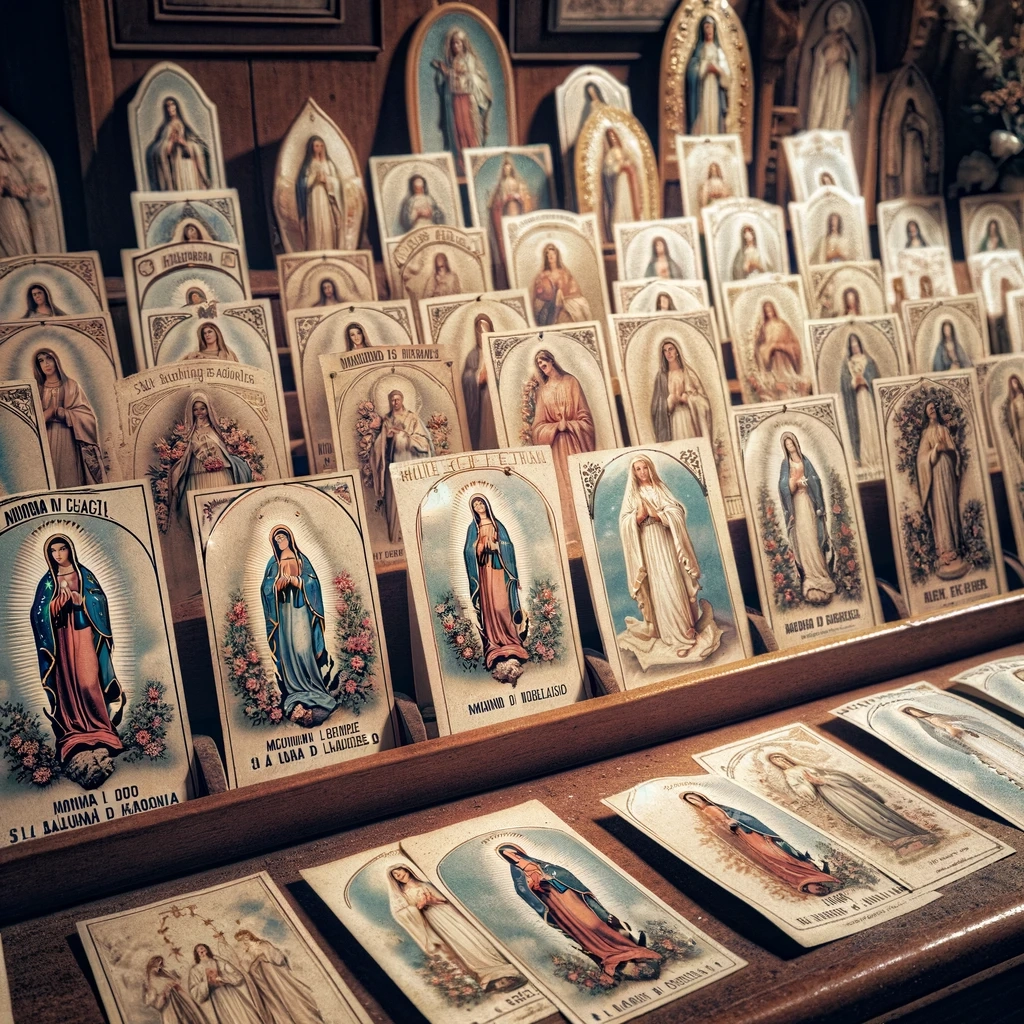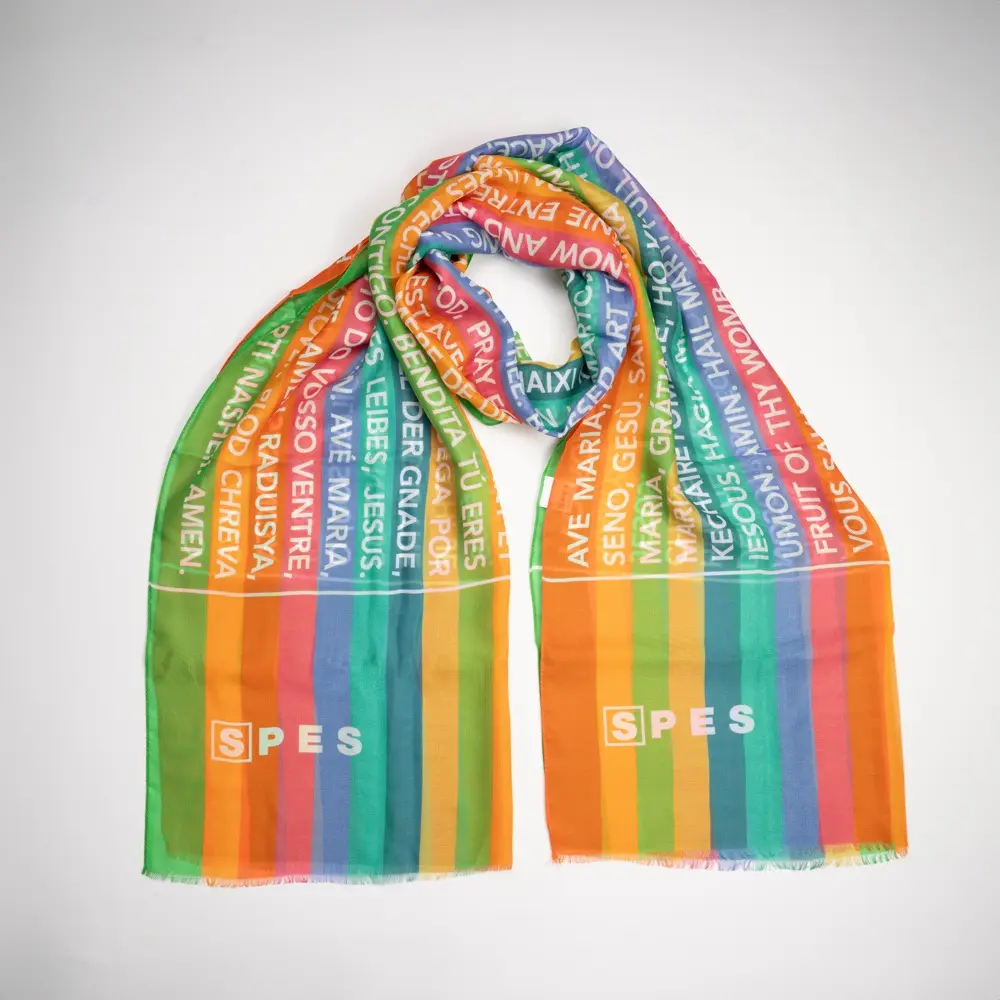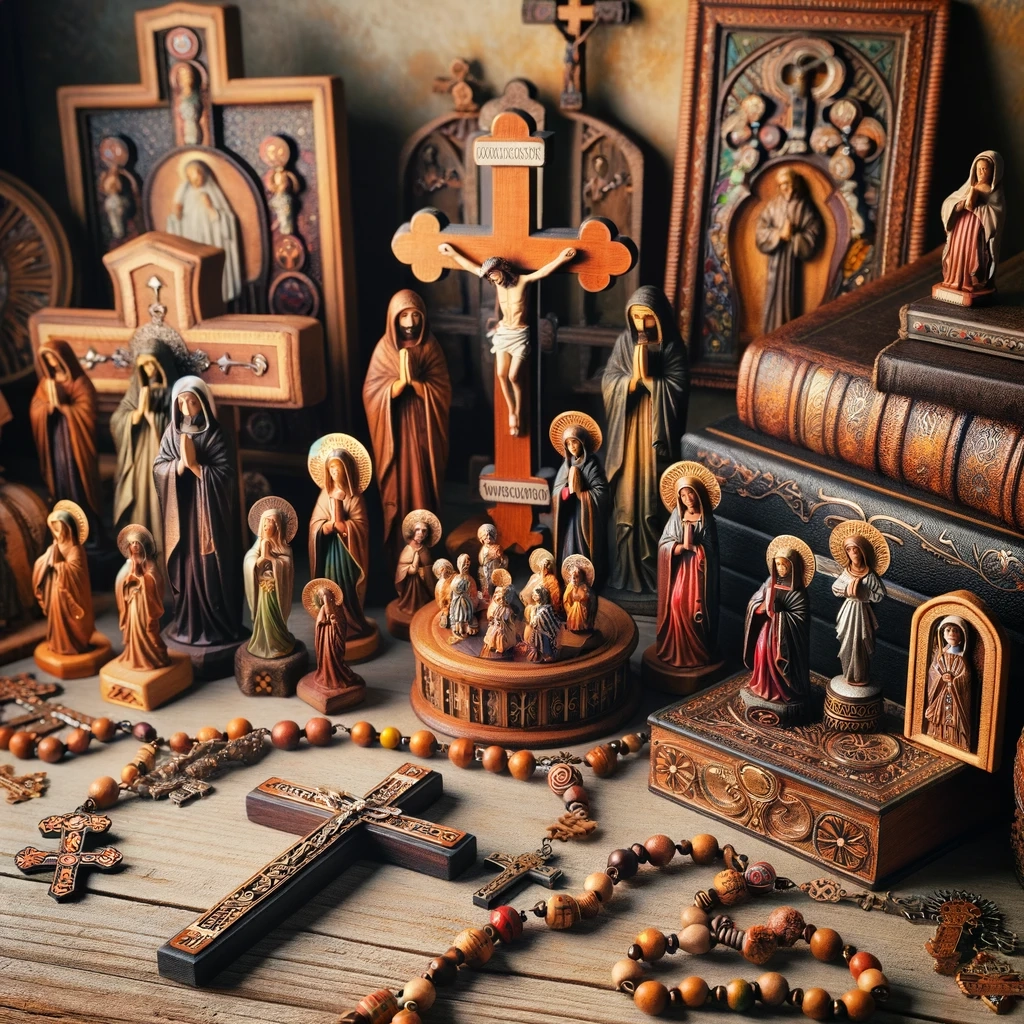Shrines of Our Lady
The holy cards of Our Lady and to other saints are objects of great significance to devout Catholics. These small sacred portraits, often made on paper or other materials, depict sacred figures and saints of religious tradition. Veneration of holy cards is a gesture of devotion and prayer that many people practice in their daily lives.
Veneration and Typologies
Among the most requested and revered holy cards by devotees are those depicting Our Lady in various of her apparitions, such as Our Lady of Lourdes, Our Lady of Fatima, Our Lady of Guadalupe, Our Lady of Medjugorje, and many others. These holy cards depict Our Lady in specific poses or situations related to her apparitions, often accompanied by specific prayers or invocations.
In addition to Our Lady, there are many other holy pictures that enjoy great popularity among devotees. These include holy cards dedicated to particularly venerated saints such as St. Francis of Assisi, St. Joseph, St. Anthony of Padua, St. Rita of Cascia, St. Pio of Pietrelcina, and many others, each of which is associated with particular graces or intercessions.
Use and Function
The collection of holy cards can become a personal or family practice, with the intent of creating a sacred place within the home. Many devotees place holy cards in picture frames, home altars or keep them in their wallets, considering them a means of protection and blessing.
In addition to their function as objects of veneration, holy cards play an important role in spreading faith and spirituality as they are distributed during pilgrimages, religious celebrations and other special occasions.
Motivation and History
The purchase and collection of holy cards are often motivated by a search for spiritual comfort, a request for divine intercessions or gratitude for graces received. These small sacred objects are tangible symbols of faith and devotion that continue to be a significant part of the religious practice of many believers around the world.
Holy cards, as devotional objects and religious iconography, have roots that go back many centuries. However, the first modern holy pictures, as we know them today, were made beginning in the 17th century. They were produced mainly in Italy and other parts of Europe.
A pioneer in the production of holy cards was Blessed Giuseppe Maria Tomasi (1649-1713), an Italian Dominican religious. He initiated the spread of so-called “Door Saints” made on small cards with sacred images that were placed on the doors of houses as protection and blessing. These small images constituted a kind of forerunner of modern holy pictures.
However, large-scale production of holy cards as devotional objects dates back to the 19th century. They were then made and more widely distributed as instruments of personal devotion and for spreading the Catholic faith. These holy cards included images of saints, Our Lady, Jesus Christ and other sacred subjects.
The first prints on paper with sacred images were made using lithography and silkscreen printing techniques. These techniques enabled the mass production of holy pictures at affordable costs and encouraged their spread among the faithful.
In later years, the production of holy cards evolved, with the introduction of increasingly sophisticated printing techniques and high-quality materials. Today, holy cards come in various shapes, sizes and artistic styles, while still maintaining their significance as objects of devotion and spirituality for believers.







